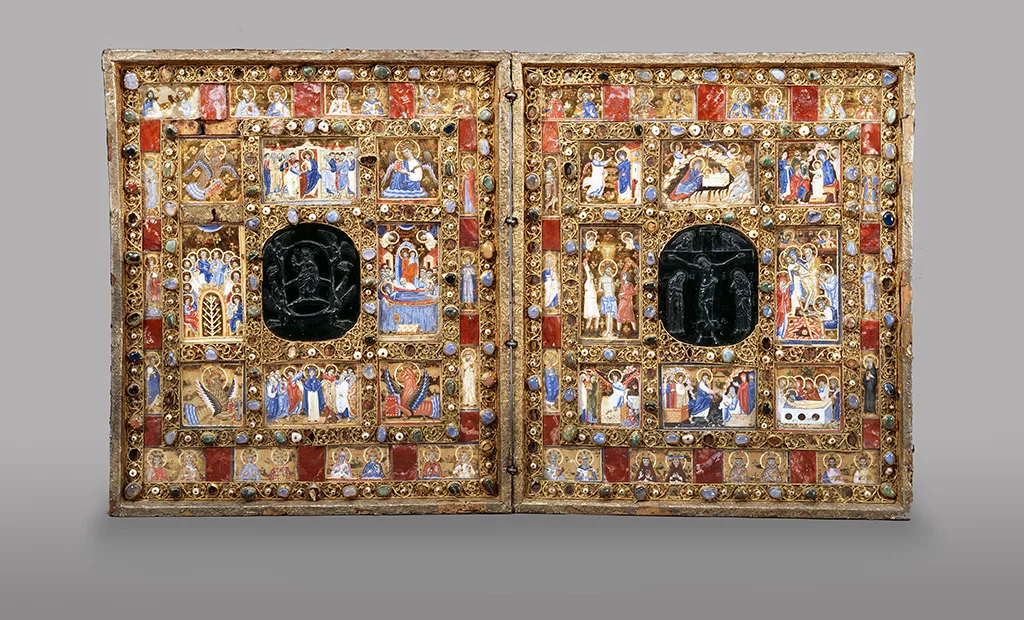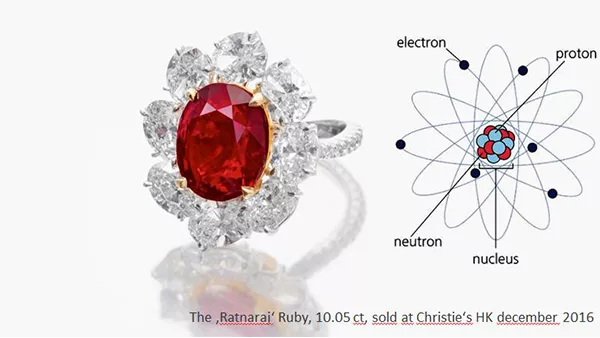
Gemmological study of the medieval Königsfelder diptychon
by Dr. M.S. Krzemnicki, first published in Facette 27 (June 2021)

In 1298 AD, the king of Hungary Andreas II presented to his wife Queen Agnes a stone-set wooden altar piece as a royal wedding present. This small medieval artwork, known today as the Königsfelder diptychon, was originally made in Venice. The city was at that time an important trading centre known for the craftsmanship and artistry of its local jewellers and goldsmiths. After the death of her husband in 1301, Queen Agnes first moved to Vienna, and later to the catholic convent in Königsfelden (Switzerland) where this small altar piece was described in a contemporary inventory of 1357 AD as “ein gröss tavelen mit cristallen und mitt zwein grosen steinen an mitteninne gewürket mit gestein und bêrlen” (simplified transcription; Stammler 1895). Today the gem-set diptych is one of the highlights of the medieval collection of the Historic Museum of Berne, in Switzerland’s capital city.
In a recent research collaboration with the Historic Museum of Berne, SSEF was invited to inspect this medieval masterpiece for a first gemmological investigation of the stones set in the item. As a preliminary result of this research project, we found that the two wings of the wooden altar are dominated by ornamental stones, such as various varieties of chalcedony and jasper, with two onyx plates in the centre, and additionally a few blue cobalt-glass cabochons and natural pearls. The filigree portraits of saints with their gloriole made of tiny seed pearls are covered as a protection by rock crystal plates, probably from Alpine sources.
A meticulous study of the stone settings and a comparison of photos of this item from the late 19th century to photos taken very recently revealed that this medieval artefact was repeatedly repaired in the past few centuries up to the mid-20th century. We assume that in most cases these repairs were carried out to fix the stones which had fallen off from the wooden altar and place them back in their approximate original position.


